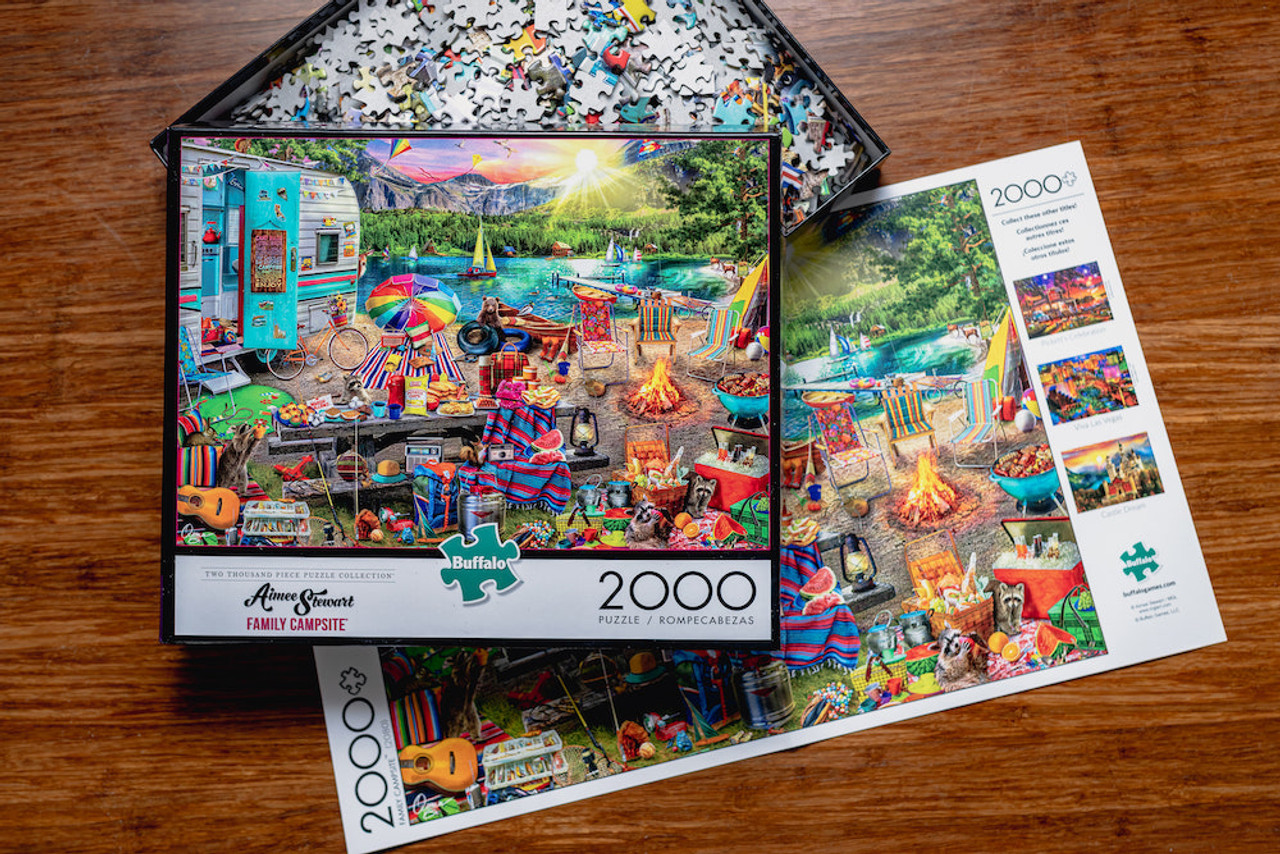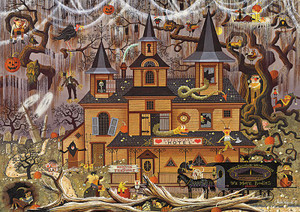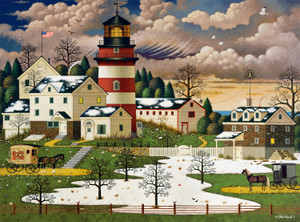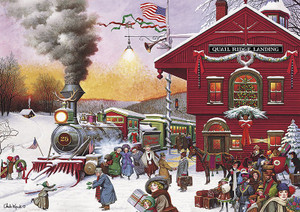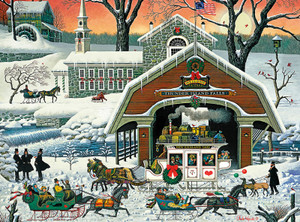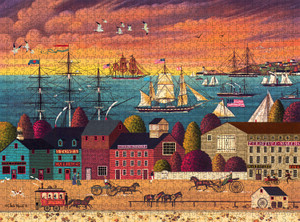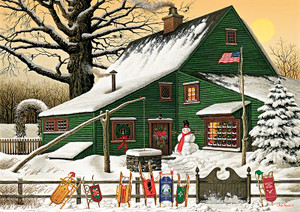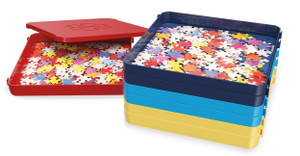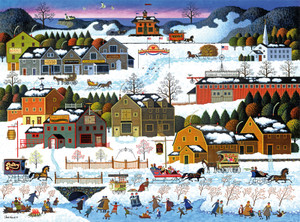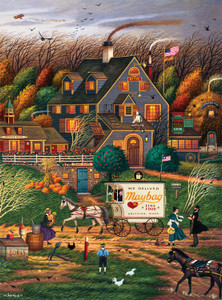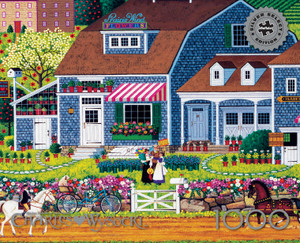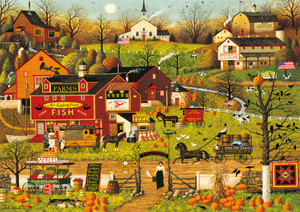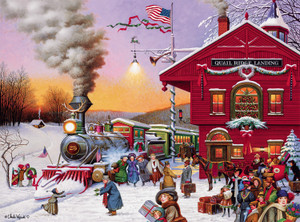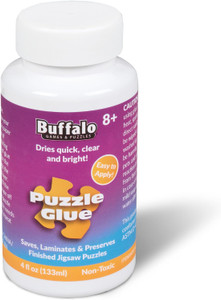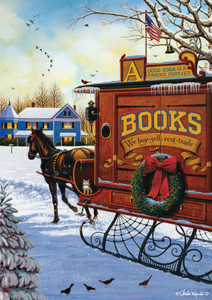Posted by Buffalo Games on Apr 22nd 2022
Tips and tricks to solving a 2,000-Piece Puzzle
To be honest, you know going into a 2,000-piece puzzle that it’s going to take some time, but that doesn’t necessarily mean you want it to dominate your dining room table for the next two weeks. If it wasn’t challenging, it wouldn’t be fun!
Still, there are ways you can scratch that puzzle itch in a weekend or even a day. Like any game, however, it will require you to adopt a strategic approach that pairs your goals of completing a puzzle with doing it in record time. Here are the best tips and tricks for solving a challenging puzzle as quickly as possible.
Measure Your Puzzling Surface
There’s no faster way to derail your puzzling experience than by accidentally selecting a surface that’s not aligned with the size of your puzzle. Even with relatively small pieces, 2,000-piece puzzles can be fairly large.
The thing to keep in mind is that you can’t just choose a table that will accommodate the surface area of your puzzle. You also need room to group pieces for easier sorting, to spread them out and look at them, and to move them around.
How much room do you need? Start with the dimensions listed on the side of the box and then make sure you have at least a couple of inches all of the way around, plus a couple of feet on at least two sides for sorting and separating pieces as you go.
Choose the Right Puzzling Surface
When putting together 100-piece puzzles, the surface you choose hardly matters — as long as it’s relatively flat. For larger puzzles, though, you have to be much pickier about where you assemble them.
You’ll want a surface that’s completely flat and smooth. A rough surface may not only prevent pieces from fitting together and laying flat as they should, but it could also hinder your ability to slide pieces easily across the surface, slowing you down.
If possible, you should also try to use a surface that has a white or black background. Ideally, it should contrast with a light or dark-colored puzzle. This will help pieces to stand out and provide the best ability to see color variation among pieces.
You’ll want to avoid surfaces that are the same color as large areas of your puzzle, as well as glass tables that could cause distraction due to glare and whatever you see through them.
If you’re a frequent puzzler with an ongoing subscription, consider purchasing a puzzle mat. These handy tools come in a range of colors and can roll up to keep your puzzle safe and intact if you need to step away.
Create a System of Separation
As you work your way through a puzzle, whether it’s a 500-piece jigsaw puzzle or 2,000-piece Star Wars poster design, and organization is the key to avoiding frustration and speeding up the process. Before you decide on your preferred method of separation, it’s best to figure out how you’re going to contain your pieces.
One of the best ways to separate pieces is in flat food storage containers. You can purchase inexpensive sets at the supermarket or online. When you walk away for food, a nap, or other interruptions, you can simply put the lids on, eliminating the worry of things getting knocked over by kids or pets in your absence. Leftover shipping boxes, bins, or even paper plates could also work in a pinch.
Separate Pieces Strategically
Everyone has their preferred method of sorting puzzle pieces into categories to speed the assembly process. Of course, the strategies for sorting 2,000 pieces may naturally be a bit more complex than, say, the process for 300-piece puzzles. Here are just a few ways you might want to sort your pieces.
Edge vs. Center
Most people start by separating out the edge pieces — and this isn’t a bad way to start with larger jigsaw puzzles. It might not be as useful with irregular puzzle shapes, but if you have a standard rectangle, creating the border before working on the central image can be helpful.
Just don’t get too involved in finding every corner and edge piece. You can waste a lot of time this way. Do a quick pass to get started and you’ll find that missing edges pop up as you move into other stages of sorting.
Color and Texture
With smaller 300- or 500-piece puzzles, you might not have to worry so much about sorting before you get started, but with 2,000 pieces, you’re going to have to narrow it down a bit if you want to speed up the assembly process.
Start by separating out color groups for specific zones in the image. If there are similar color groups, look more closely at the visual textures and patterns to determine which areas individual pieces belong in.
Easily Identifiable Images
Another method of sorting jigsaw puzzles for adults is to focus on identifiable parts of the image, such as facial features, foliage, structural characteristics of buildings, and other details. In this way, you can start to form small sections of the image to build on. If you’re working with a group, individuals can focus on different areas, giving everyone something meaningful to do.
Oddly Shaped Pieces
Depending on how your puzzle is cut, you may be able to further organize pieces by unique cut patterns, such as curves or the number or orientation of tabs and blanks. With 1000-piece puzzles and up, this level of granular separation can save you a ton of time in the long run.
Choose the Right Puzzle
If you’re a regular at your local puzzles store, you probably appreciate a challenge, but on occasions when you’re going for speed, it pays to select a puzzle that lends itself to faster solving. Choosing the right puzzle for a time crunch requires little more than common sense.
If you select a puzzle that has a lot of similar colors and textures throughout, chances are it’s going to take some time to figure out what goes where because many pieces could work in several areas.
With this in mind, you’ll want to look for puzzles that have a lot of distinctive details, color gradients, and textures so you can easily distinguish the areas where pieces will go at a glance.
With a bit of planning and coordination, you can complete any puzzle faster — even challenging sets with 2,000 pieces or more!
